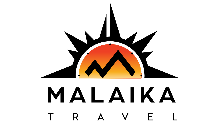Review our checklist of equipment and clothing you should pack
We have equipment available to hire for your trip, if necessary – click for details
Luggage
Waterproof duffle bag:
To carry your main gear we recommend using a 90-100 L duffle bag. Max weight is 15 Kg.
Daypack:
to carry your own daypack. Volume 30-40L is sufficient.
Cover:
waterproof cover or (and) dry bags.
Sleeping
Sleeping bag:
4-season or -20 ºC sleeping bag and compression sack.
Sleeping bag liner:
Things could be dirty so we recommend liner to keep the sleeping bag clean. The Liner also provides extra warmth.
Sleeping mat:
A sleeping mat will be provided, but if you’ll prefer an extra mat or a different one, you can take yours.
Head
Sun hat:
Preferably wide-brimmed for extra sun protection.
Warm hat:
Any hat to cover the ears.
Buff or bandana:
It is very dusty while you descend. Use a buff or bandana to protect you from breathing dust is good idea. Also provide extra warmth while it is cold.
Sunglasses:
Choose a pair of high UV protection glasses cat 3-4.
Headtorch:
A good headtorch is needed during the night, and especially when walking during darkness.
Footwear
Hiking boots:
Mid-weight hiking boots with ankle support. Well broken in to prevent blisters.
Gaiters:
High heel gaiters, mostly to prevent dirt and derbis getting into the boots.
Socks:
3-4 pairs of hiking socks and a pair of liner socks for extra warmth and blister protection.
Thick socks:
Warm socks for the summit at night.
Hands
Lightweight gloves:
Some gloves for daily use. Merino or fleece gloves.
Mittens:
It gets really cold during the night at the summit. Heavy mittens should be able to go over your liner gloves. A safety strap is advised.
Trekking poles:
Trekking poles can reduce the impact on your joints by up to 20%.
Upper body
Thermal base layer:
Merino wool is the best base layer.
T-shirt:
Fast drying, moisture wicking
Long sleeved shirt:
Fast drying, moisture wicking, when is too sunny or breezy it’s a good idea to wear long sleeved shirt.
Fleece:
One lightweight and one warm polartec fleece.
Hardshell jacket:
Waterproof and windproof jacket. Goretex is the best but poncho will also be good.
Insulated jacket:
A synthetic or down jacket for the summit push.
Legs
Thermal base layer:
Merino wool is the best base layer.
Hiking trousers:
Hiking trousers for every day hiking, fast drying and weather resistant.
Hardshell trousers:
Waterproof and windproof trousers or over-trousers. Goretex material is the best.
General Accessories
Sun cream and lip balm:
High UV protection SPF+50.
Toothbrush and toothpaste:
Just small tube of toothpaste is sufficient.
Wet wipes:
It’s a really good idea to take antibacterial wet wipes to maintain good hand hygiene.
Ear plugs:
It could be noisy in camp, so ear plugs are recommended.
Personal snacks:
You’ll get sufficient meals, but you can take your favourite snacks just in case.
Camera:
The best way to keep your memories alive. You can take pictures on the phone or Gopro, it’s your choice.
Spare batteries:
Don’t forget spare batteries for your camera, and also for your head torch.
Powerbank or solar charger:
Be sure to bring one to recharge your phone.
First aid kit and personal medication:
Imodium or any medication for diarrhoea, and also painkillers, blister plasters and plasters. Any other medication prescribed by your GP.
Water bottles:
Capacity to carry at least 2 litres of water. A neoprene cover is advisable to help insulate the bottle at higher elevations. Water bladder is good, but you’ll need a thermos or insulated bottle for summit nights. Water bladder will definitely freeze.
Luggage padlock:
To lock your luggage and duffel.
Mountain equipment rental
Prices in US$
Scarf $5 /trip
Sleeping bag $30 /trip
Socks $5 /trip
Summit pants (Ski pants) $15 /trip
Sun hat $10 /trip
Sunglasses $20 /trip
Thermal rest style mat $10 /trip
Thermal top $10 /trip
Thermal T-shirt $10 /trip
Thermal underwear $10 /trip
Walking poles (pair) $10 /trip
Walking T-shirt $10 /trip
Walking trousers $10 /trip
Warm hat $5 /trip
Water bottle 1 litre $5 /trip
Waterproof jacket $15 /trip
Waterproof trousers (windbreak) $15 /trip
Balaclava $5 /trip
Bandana $5 /trip
Binoculars $25 /trip
Camelback water bag $15 /trip
Crampons $25 /trip
Day pack cover $5 /trip
Down jacket $20 /trip
Duffel bag (waterproof 85 litre) $20 /trip
Fleece $5 /trip
Fleece jacket $10 /trip
Fleece trousers $10 /trip
Gaiters $10 /trip
Gloves $5 /trip
Glove liners $5 /trip
Head torch $15 /trip
Hiking boots $25 /trip
Neck warmer $5 /trip
Pillow $5 /trip
Poncho $15 /trip
Rucksack 70 litre $30 /trip
